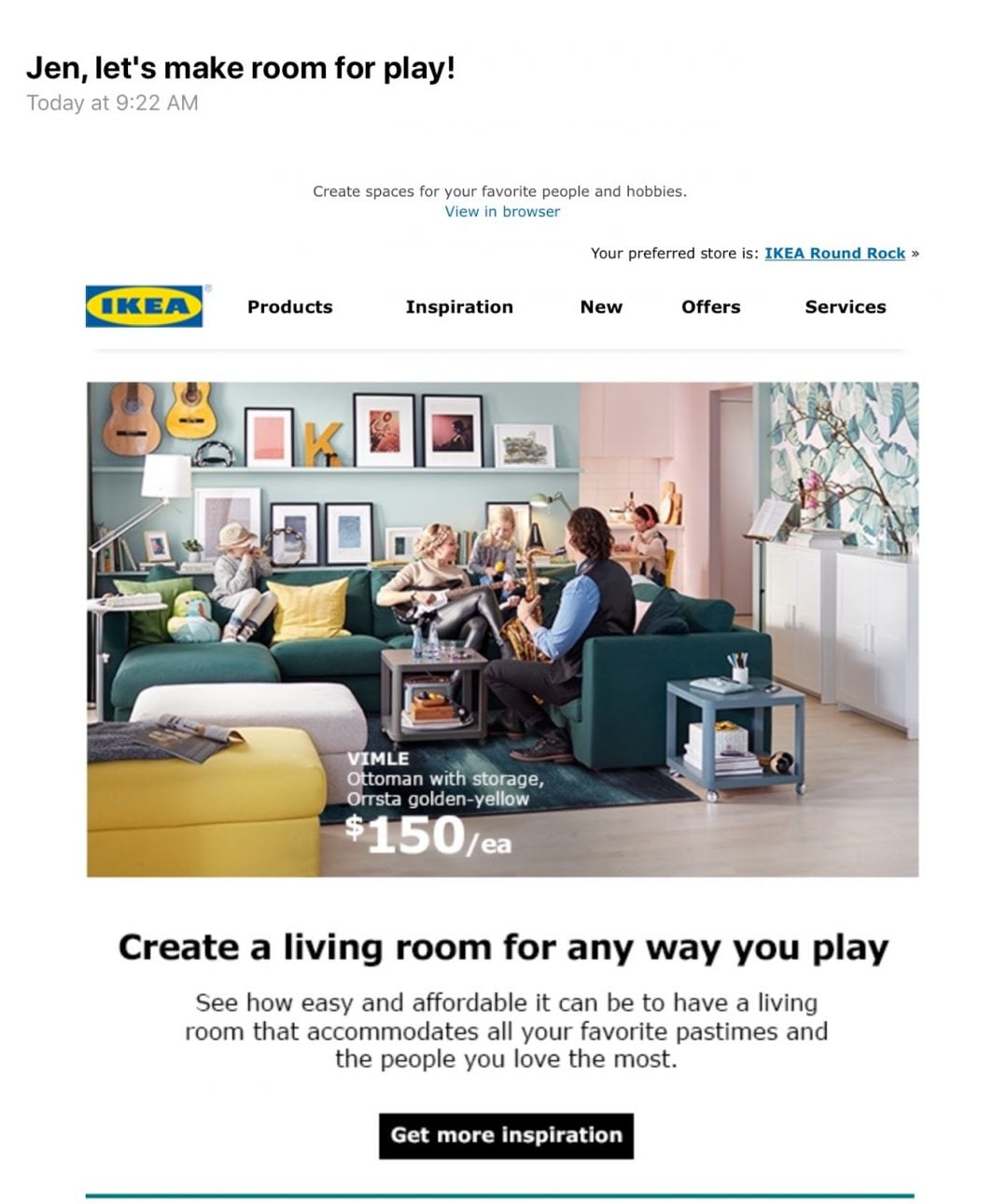Inbound Marketing Examples: 14 Strategies to Engage Your Email List

If you’re looking for some fresh inbound marketing examples to follow that will give you a reason to engage with your email list, look no further.
Whatever your industry or customer demographic – even if it’s been a long time since you’ve emailed them – these tried-and-true email strategies will inspire you to reach out.
1. Use their Name
Customization is an established inbound marketing best practice. Using their first name in an email is an easy way to customize your lead or customer’s experience while creating an environment of friendliness and familiarity right in their inbox.
Interestingly, though it’s not new, customization is a tactic many companies still don’t take advantage of. Check out Walgreens’ example below.
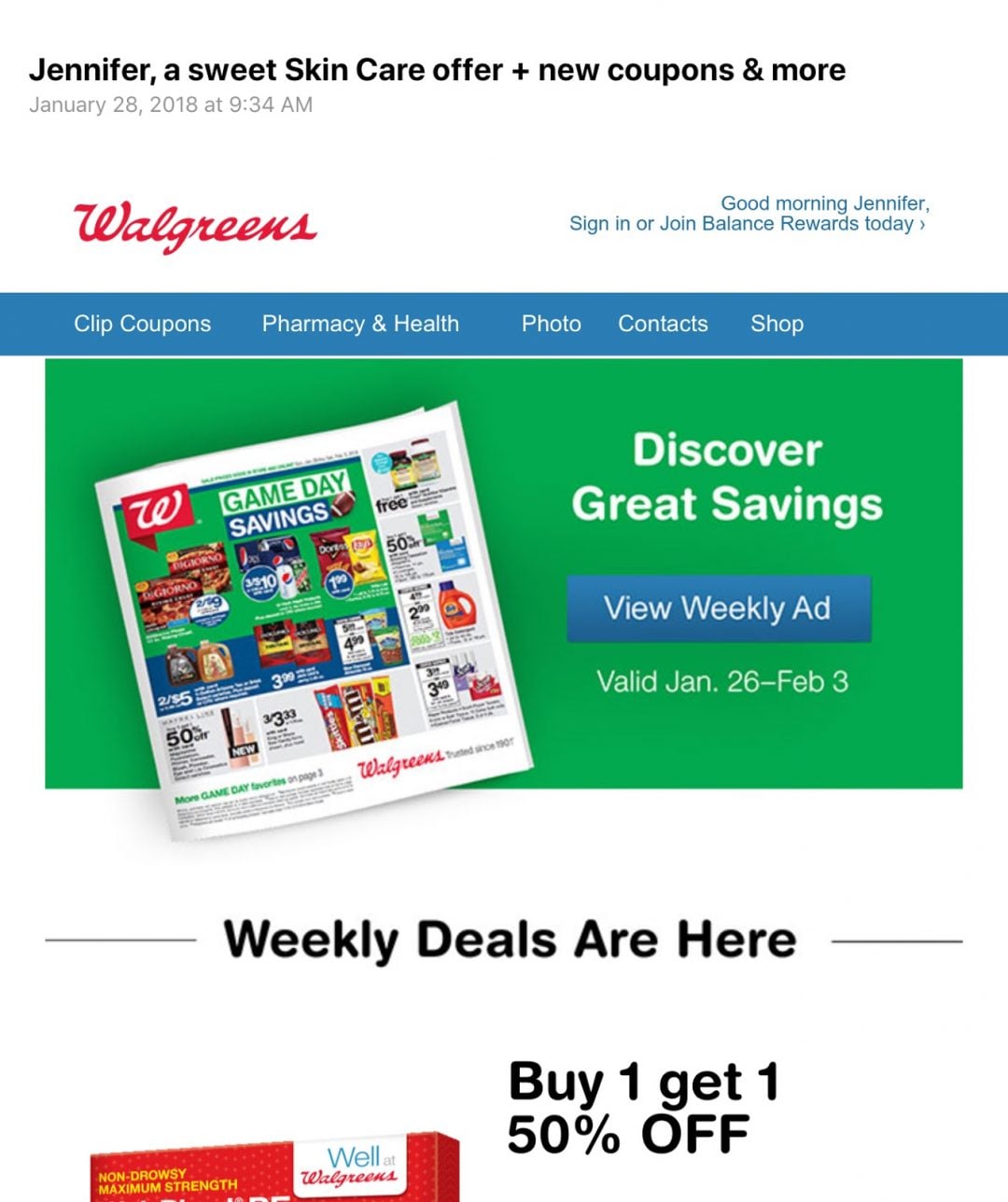
Context matters. Depending on your industry, product, and service calling them by name may work better in graphic heavy or in text only emails. Test a few variations to determine which drives more engagement for your business.
2. Show Them You’re Paying Attention
Use your website data to target messaging to specific individuals.
For example, IKEA would likely not have sent this email to a single male. With this email, the company is demonstrating it knows what has been searched for recently on its website and is using that knowledge to direct attention to relevant or related products.
3. Read Their Mind
If you know a major event is capturing the attention of your leads and customers, leverage it. This one uses the subject line, a body copy full of references and puns, button text, and the graphic to make the connection. See this example from Sun Basket below.
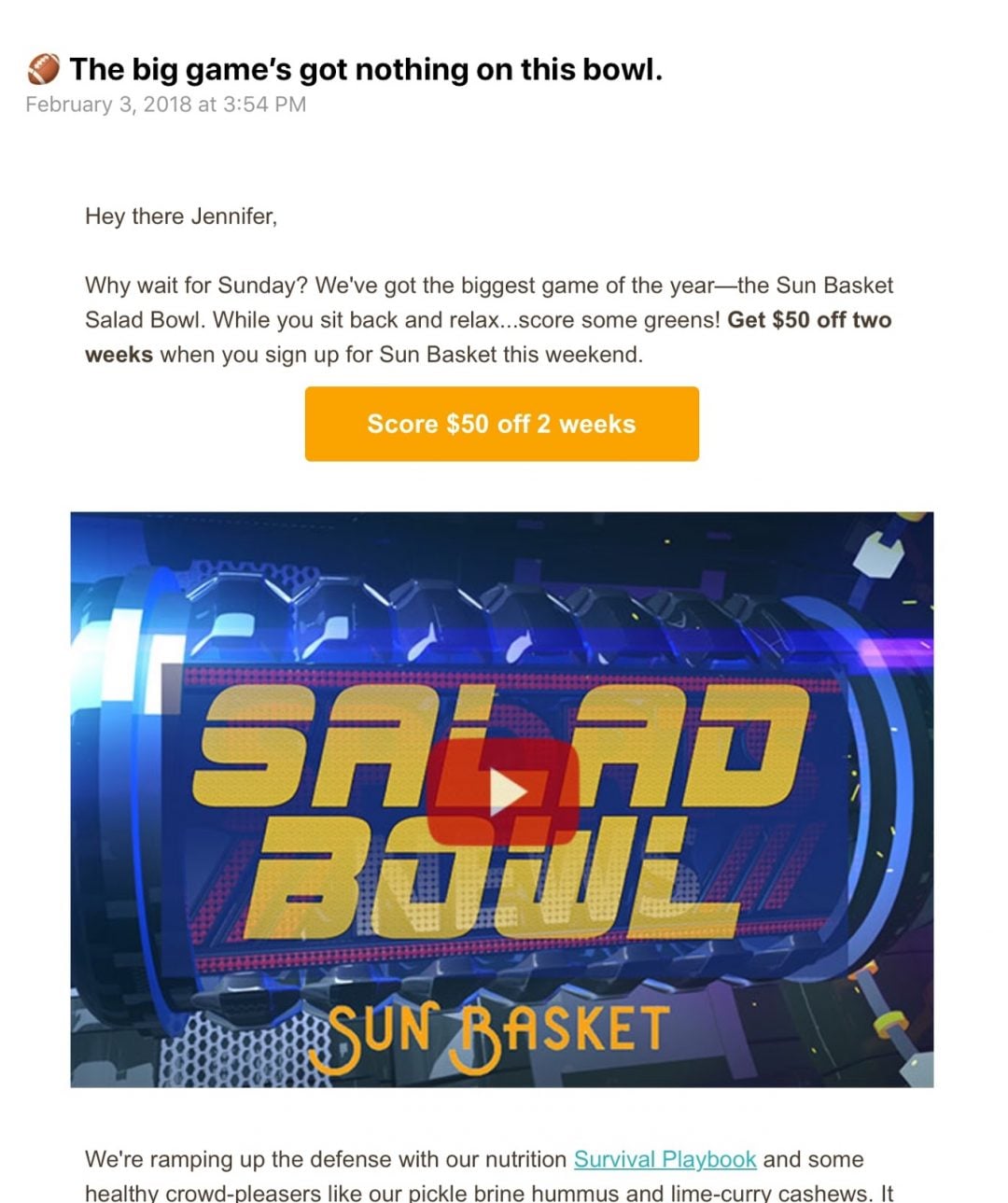
Since it’s on their mind, they’ll be more likely to take notice of and open your email even though their thoughts might be elsewhere.
4. Make Them Feel Good
Take every opportunity to make your leads and customers feel good. Who doesn’t like to feel successful and be remembered and celebrated? Look at all these happy people selfie-ing in this example from MyFitnessPal!
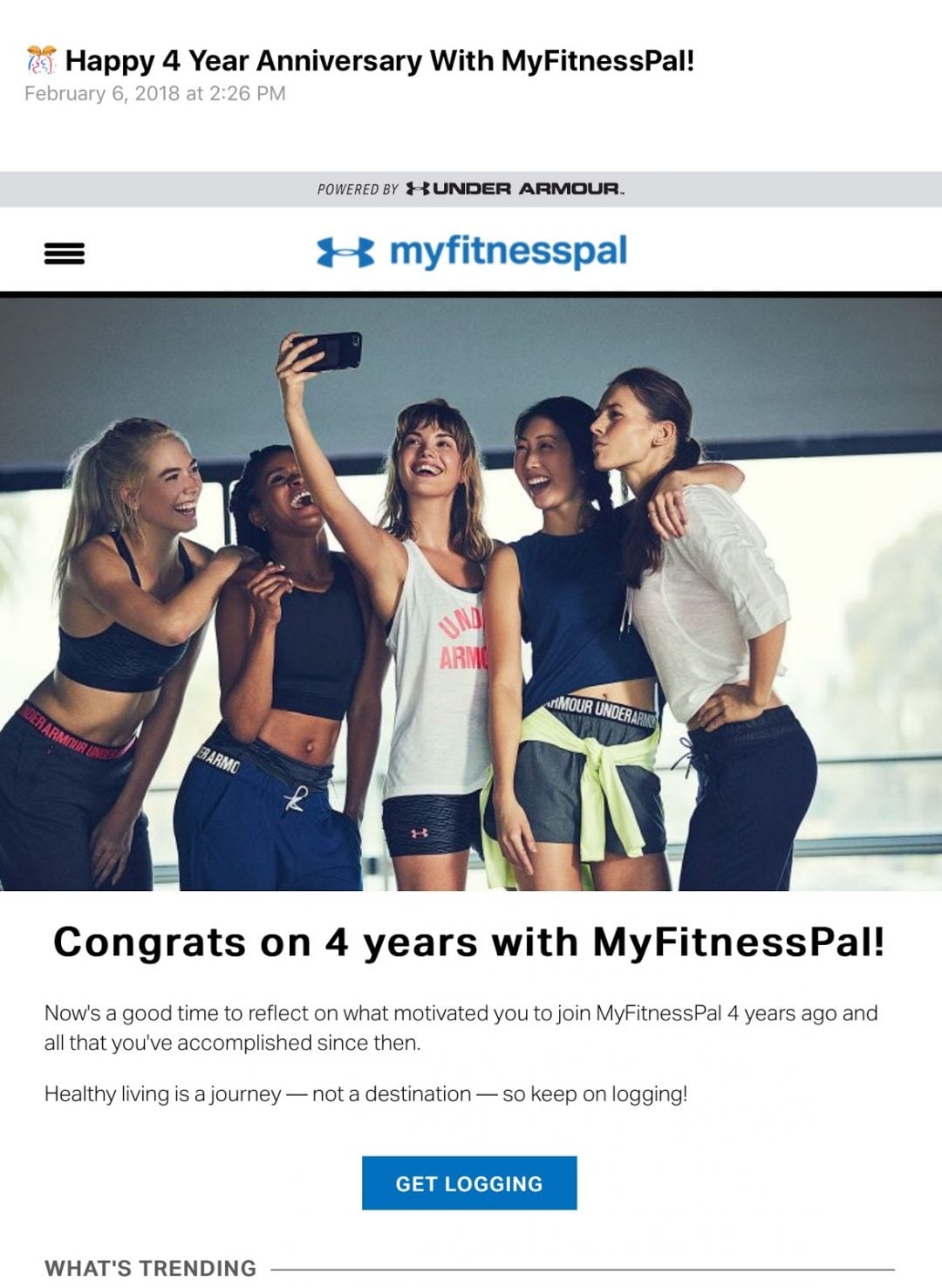
Nevermind if you don’t look like one of the fit beauties above, this email is also encouraging, calling the reader to engage with a brief bit of encouraging text and a “Get Logging” button.
5. Make Them Feel Special
This email example from Travelzoo not only gives the reader priority information via “newsflash,” this email is for VIP’s only.
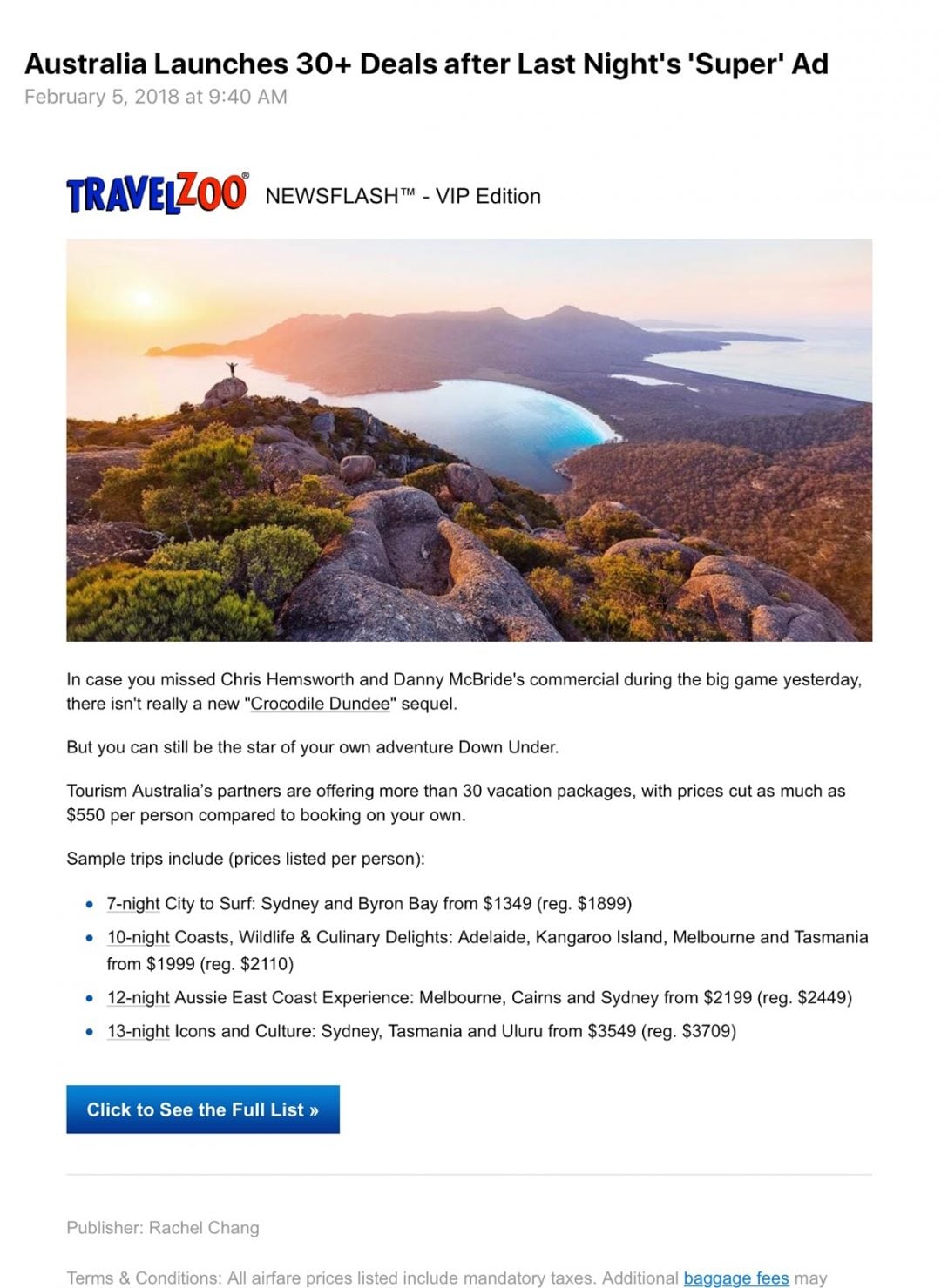
Making your lead or customer feel like they’re getting secrets or offers makes them feel special. Making them feel valued is an inbound marketing tactic that will engage them – because not everyone is getting this inside scoop.
6. Update Them
Just because your lead or customer hasn’t engaged in a while doesn’t mean they’re not interested in your product. In these times, even across a variety of industries and demographics, your customers are busy. So shoot them an email to let them know what’s going on.
This company, BAM Academy, does it with a simple subject line and attention-grabbing images.
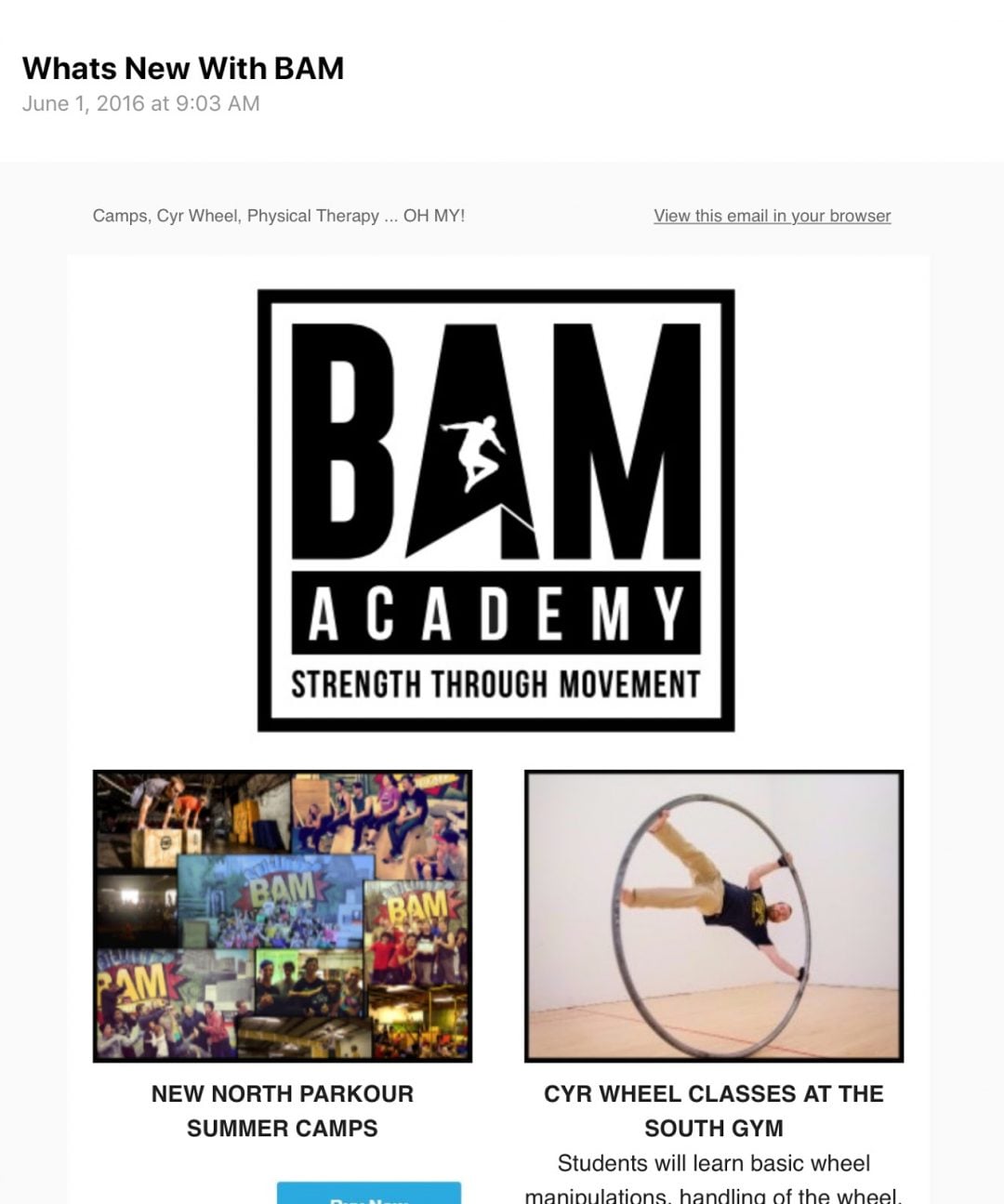
“What’s New” emails (and sometimes even if it’s not so new), is an inbound messaging strategy that will re-engage busy leads and customers.
7. Make Their Life Easier
Just like most people are busy, “easy” is another messaging strategy that will resonate with just about any lead or customer base.
Check out the example from Dollar Shave Club. This email is text-light and straightforward. Keep it simple. Helpful.
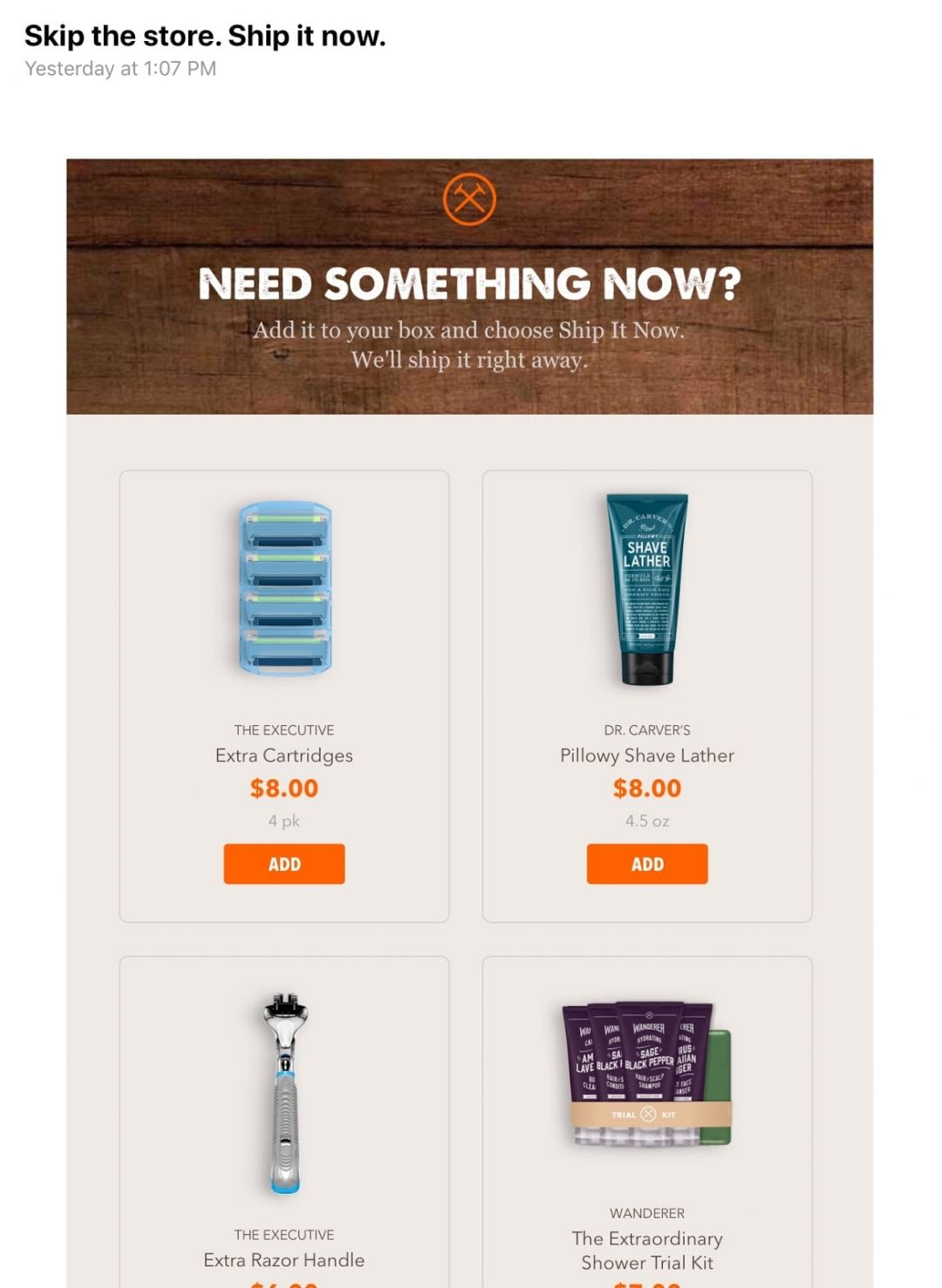
Sending out periodic emails with messaging about making life easier is sure to engage.
8. Educate Them
Especially if your product is new, niche or in any way intimidating to the average human, educating your email list is a purposeful inbound marketing strategy. Amazon’s Alexa offers so many features, its users need these emails to engage with its product.
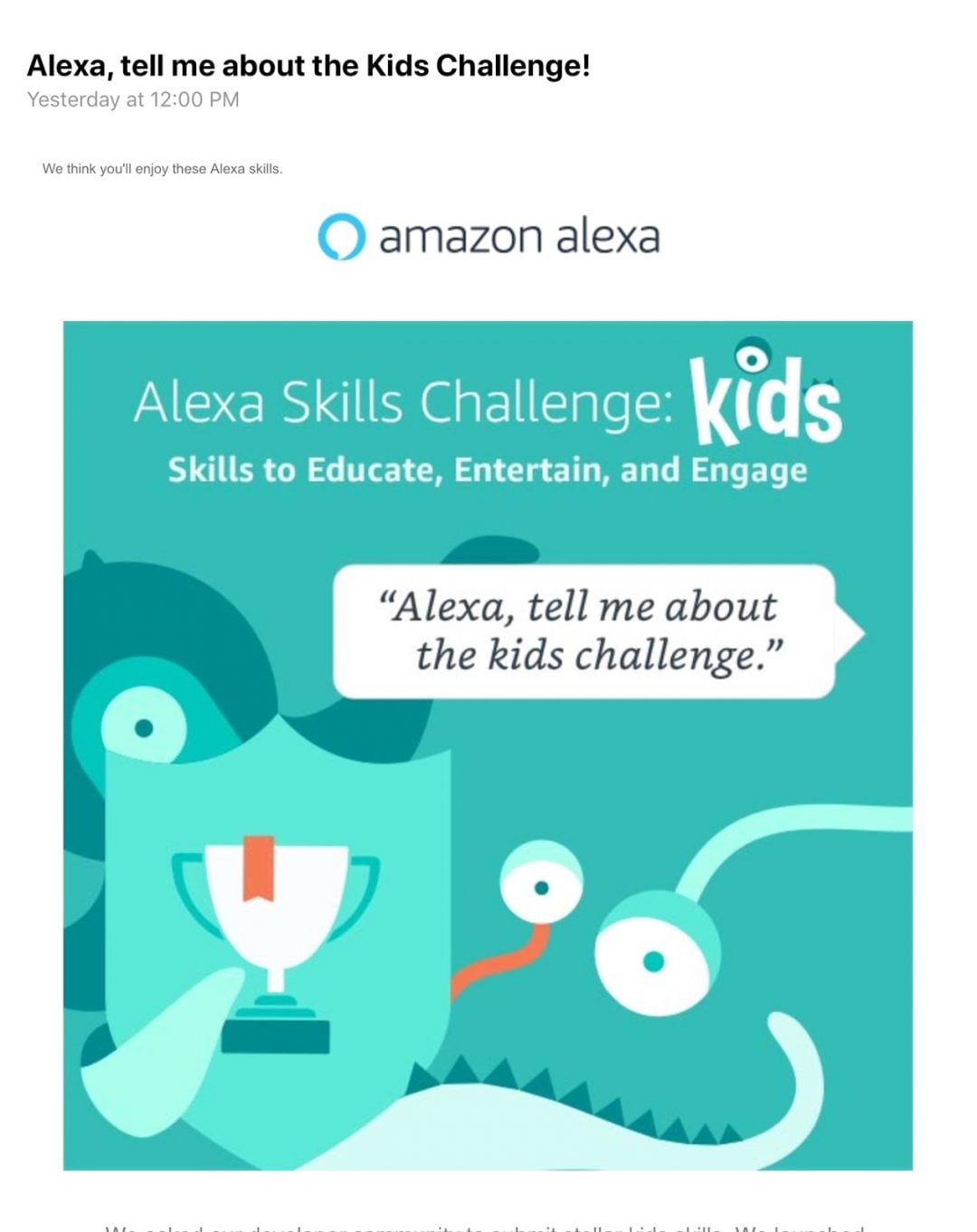
Interestingly, this email is designed to get the customer to engage with a product it already owns. It doesn’t seem like it would directly drive new sales. But it will. A happy customer will continue to be a happy customer.
9. Follow Up on The Free Stuff
Don’t forget you gave them something. When some time has passed, ask them what they think about it! This email from Brilliant Book House uses the subject line to open the conversation.
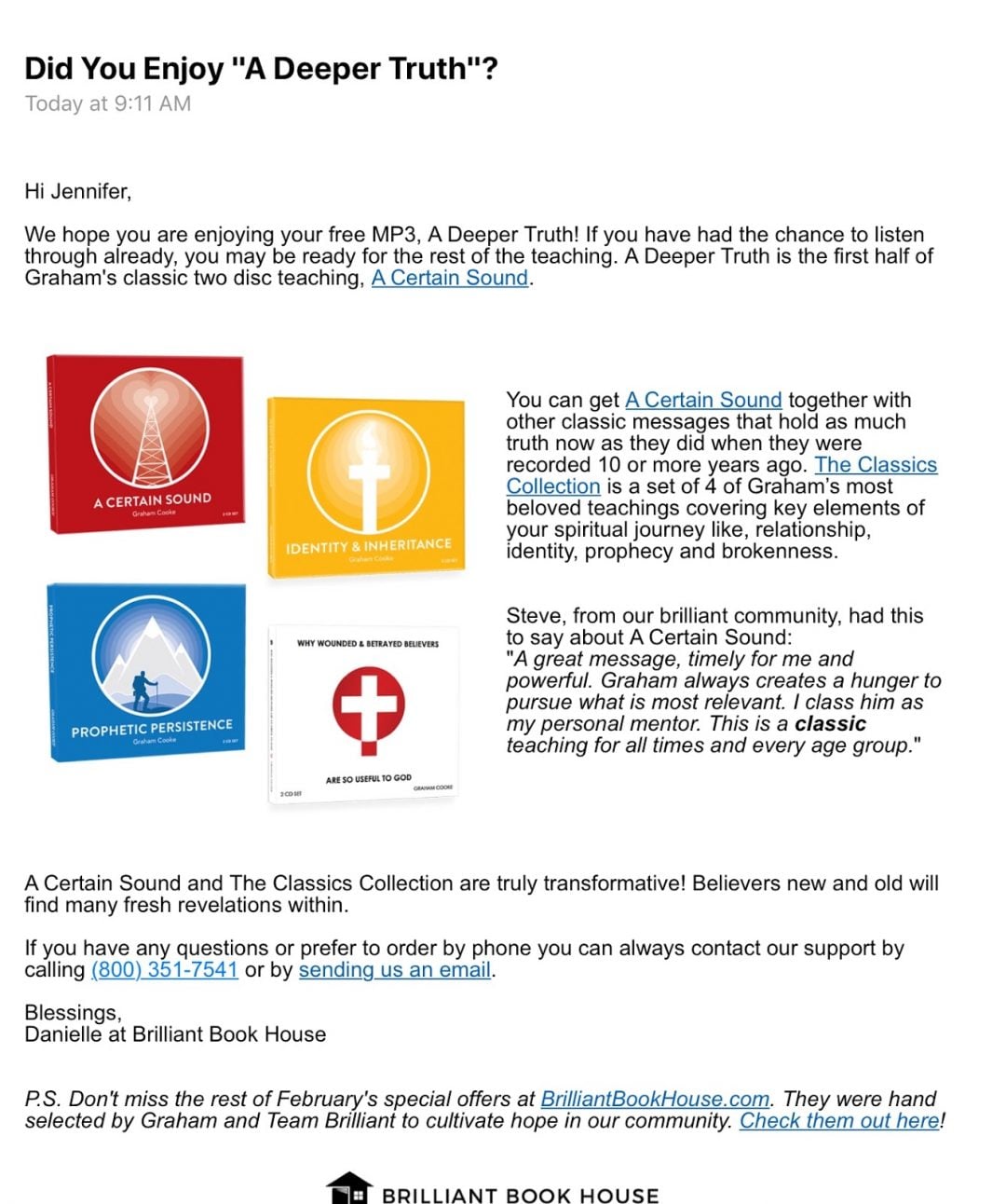
This email not only comes across as caring about the reader’s opinion in regard to the freebie, it cross-sells the second half of the product.
10. Remind Them
There’s no harm in reaching out a time or two. If it’s important to you, remind them! This email from Bank of America also reassures the customer it will only take three minutes.
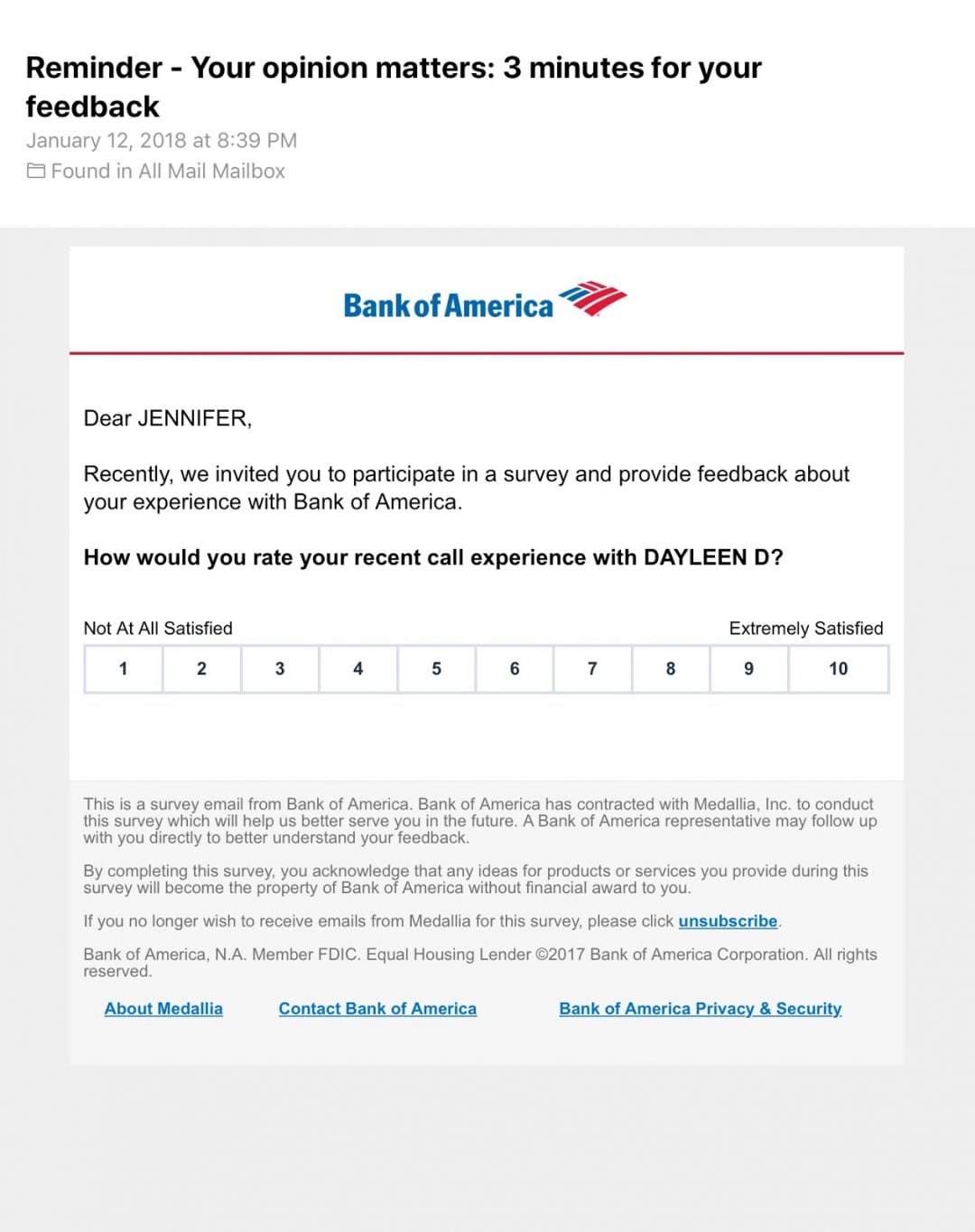
Putting the actual survey right in the text-light body of the email is a straightforward way to engage.
11. Listen to Them
Another commonality in all leads and customers is the desire to be heard. This email, after notably sharing trends with its reader, asks them to “share your story.”
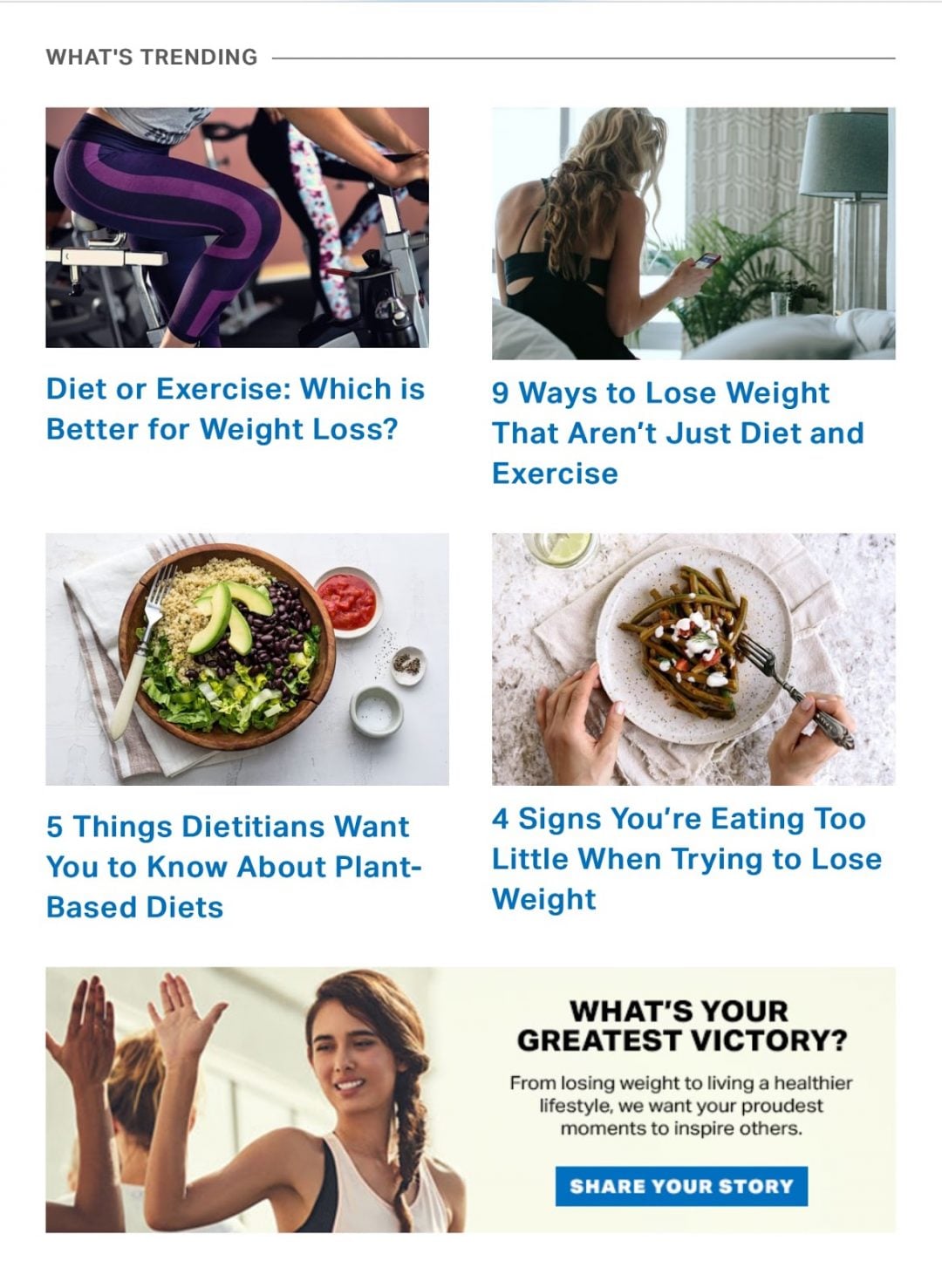 Giving your email list a clear call to engage in a way that is personal to them can also be a valuable way to build testimonial content.
Giving your email list a clear call to engage in a way that is personal to them can also be a valuable way to build testimonial content.
12. Share With Them – Your Content & Someone Else’s
Just because they arrived on your website for something specific, does not mean they don’t want to hear what you have to say. If they’ve subscribed to your emails, email them your content!
Even this subscription razor company has its own content now. Take note!
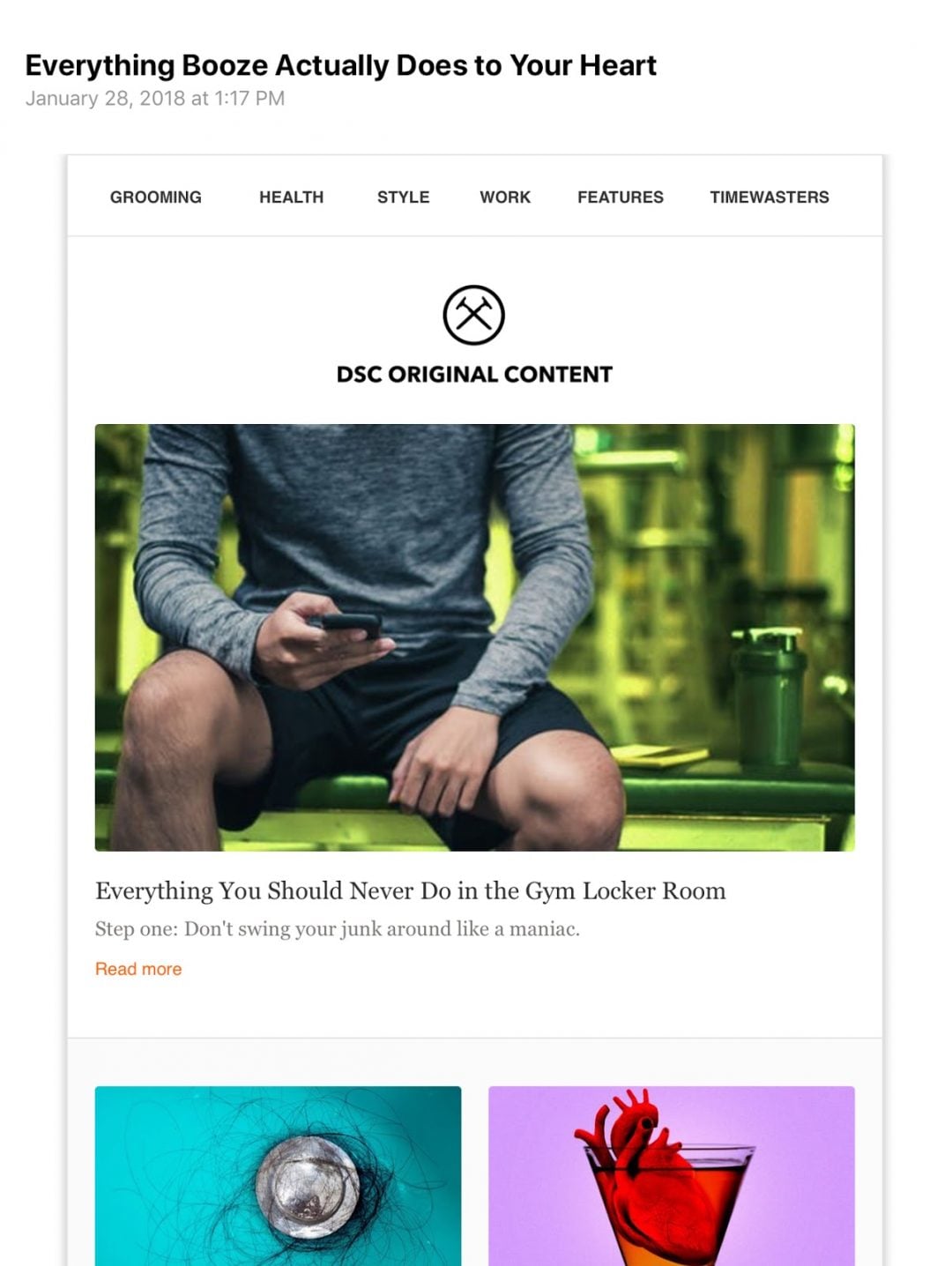
But you can even share other business’ content – especially if you have a mutually beneficial relationship. Amazon doesn’t sell the news, but here they are sharing The Washington Post’s story.
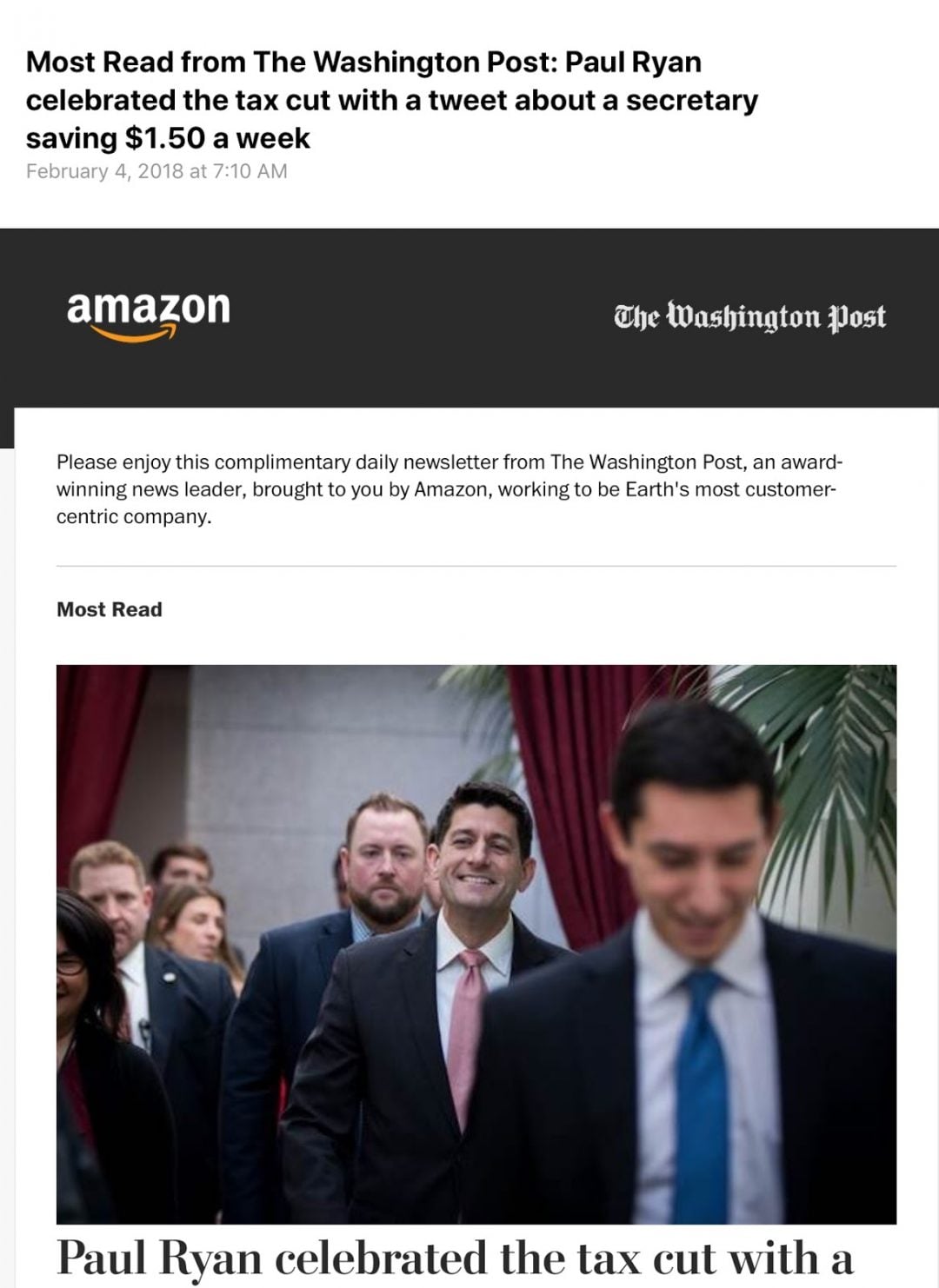
Sharing other people’s content can help build your own credibility and sets you up as a resource for good information on topics related to your products or services.
13. Ask Their Opinion
In today’s business environment, you must constantly be improving your products and services. With a survey, you can engage with your customer at the same time. This email communicates that the reader’s “thoughts” are “valuable to our team.”
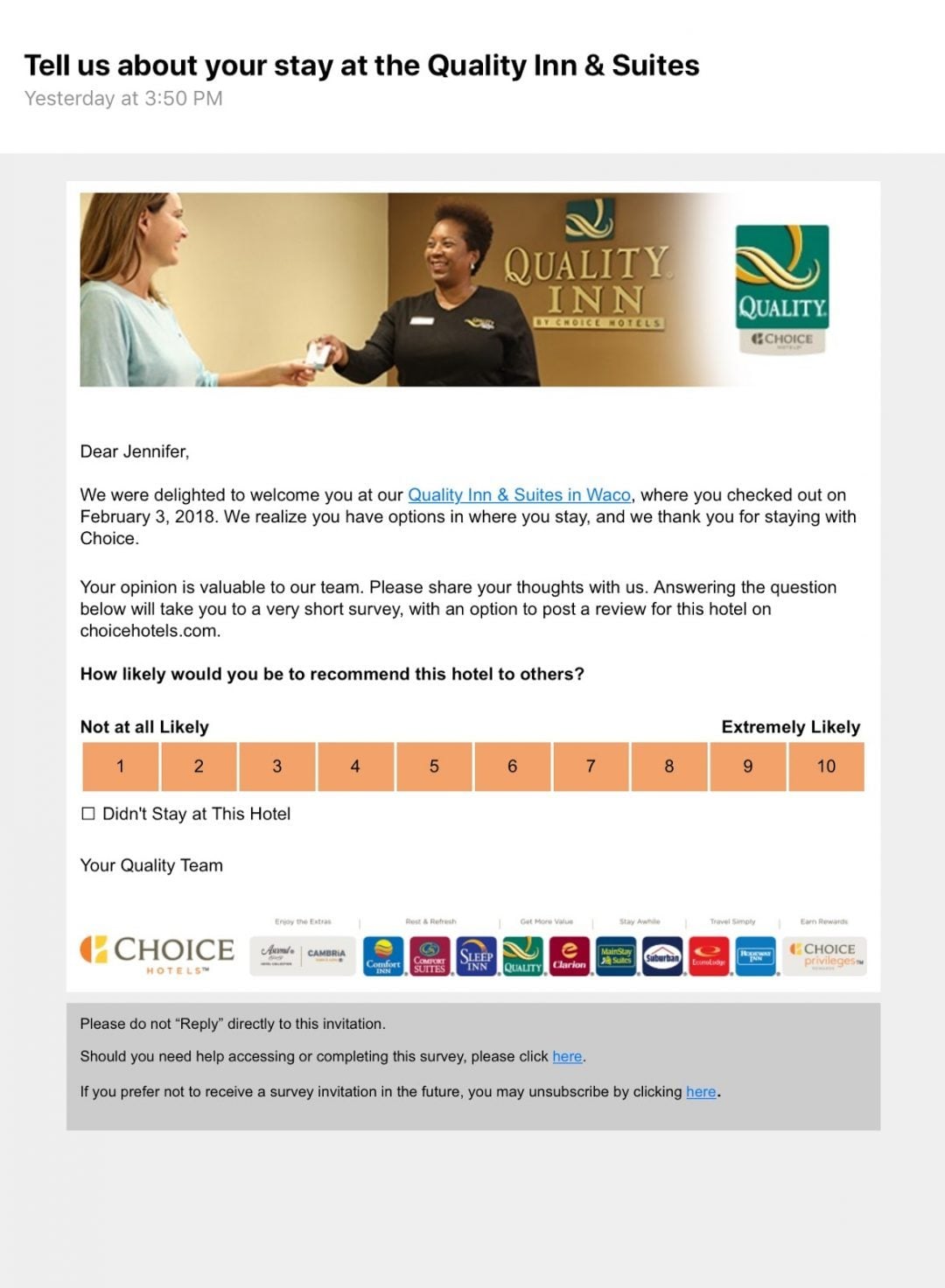
Surveys are also a good way to diffuse negative online reviews. If the email is timely, the reader might be more ready to give you a piece of their mind via the survey than share their thoughts on Yelp.
14. Breakup with Them (A Hundred Different Ways)
One of the most effective inbound marketing examples to follow is the breakup email. This one has a friendly tone, using the “last call” subject line, bright colors and “best date” text to catch the eye.
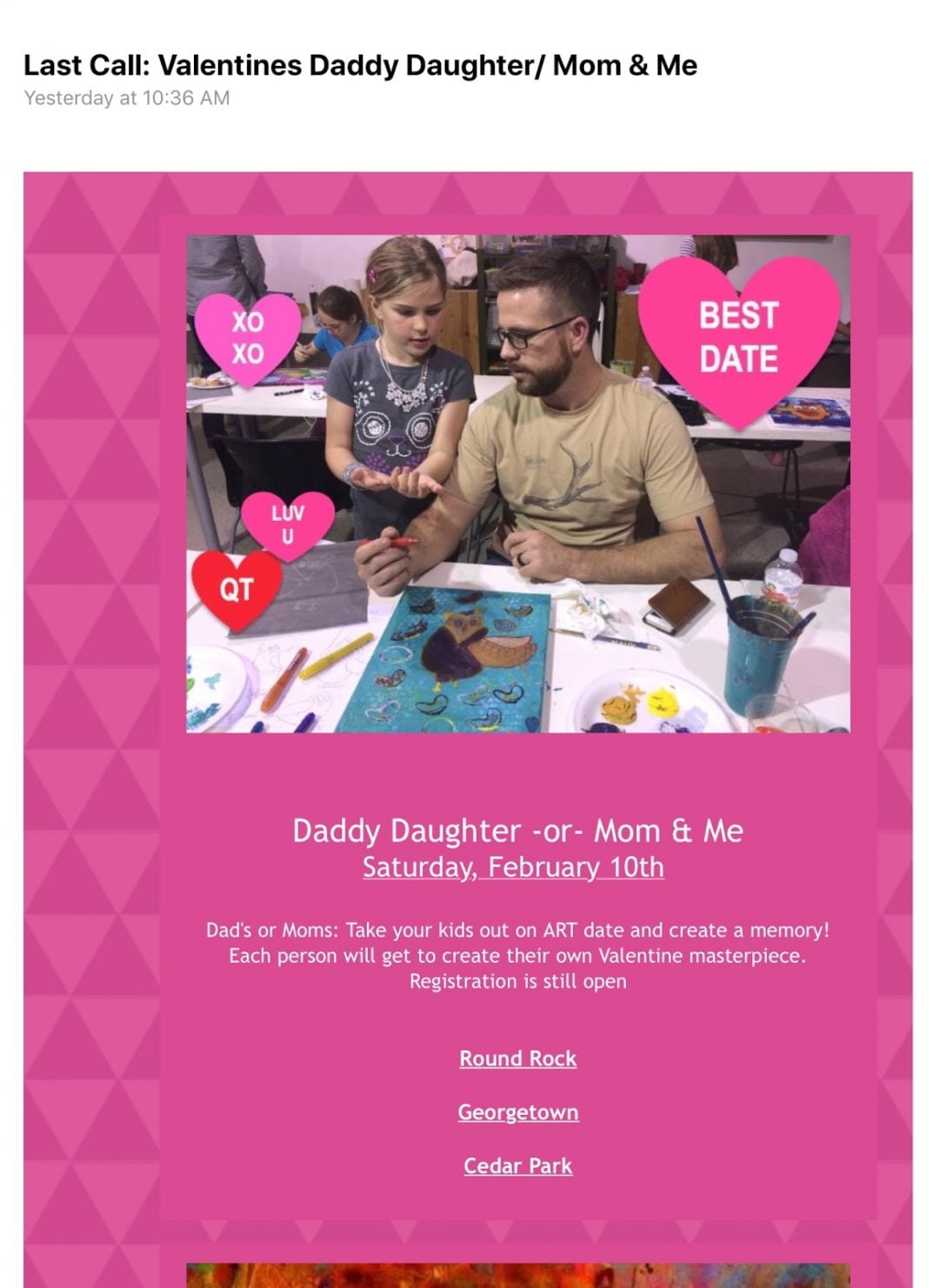
“Last chance” for something everyone wants. Hilariously, this email from primary also uses “last call” in its header copy. It also gives you a deadline for ordering.
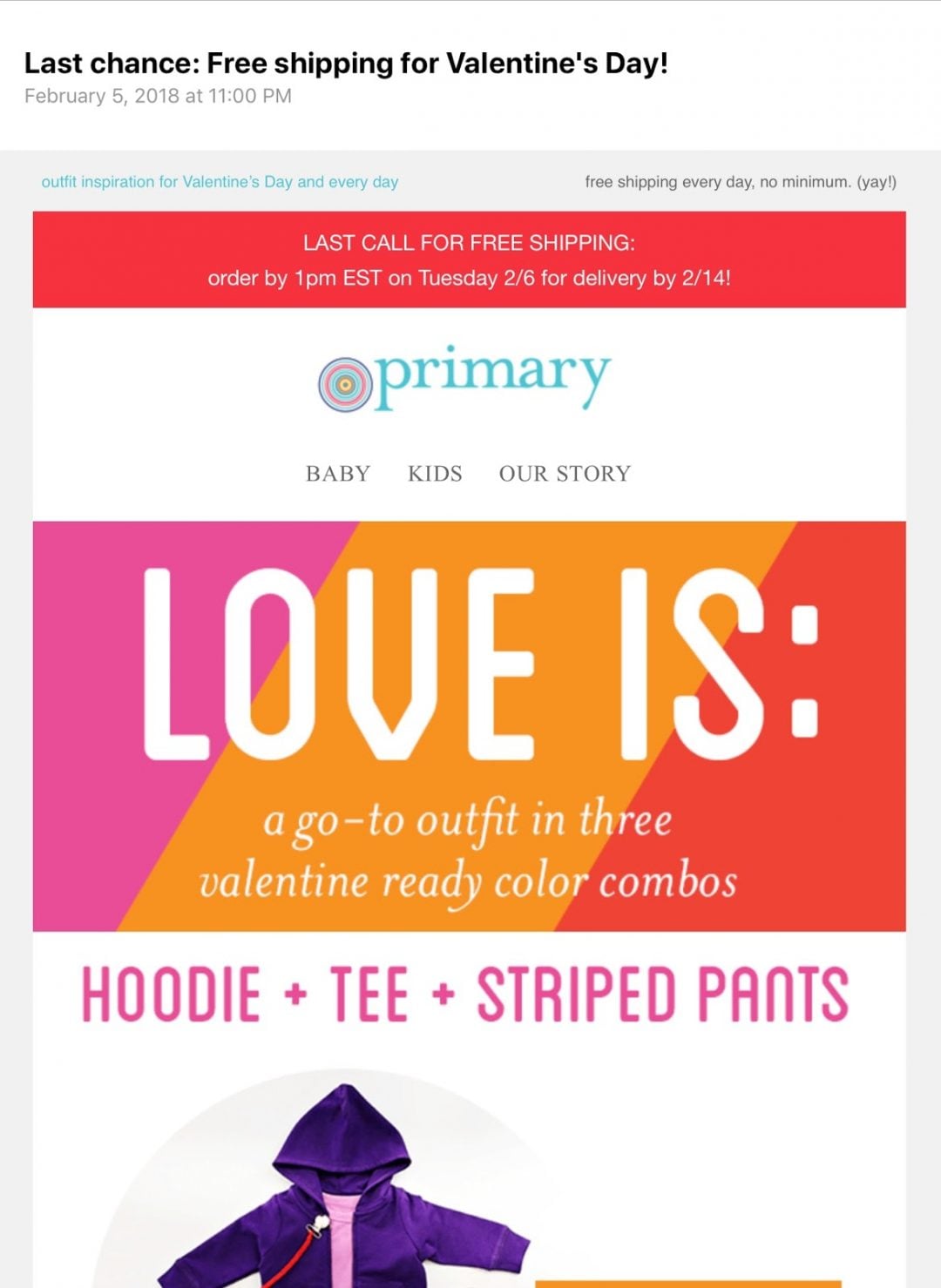
Yep, another “Last Chance,” but notice this is a text-only email. Very serious. This breakup email offers plenty of clickable text for engagement. It’s saying you’re running out of time, but it is providing all kinds of opportunity.
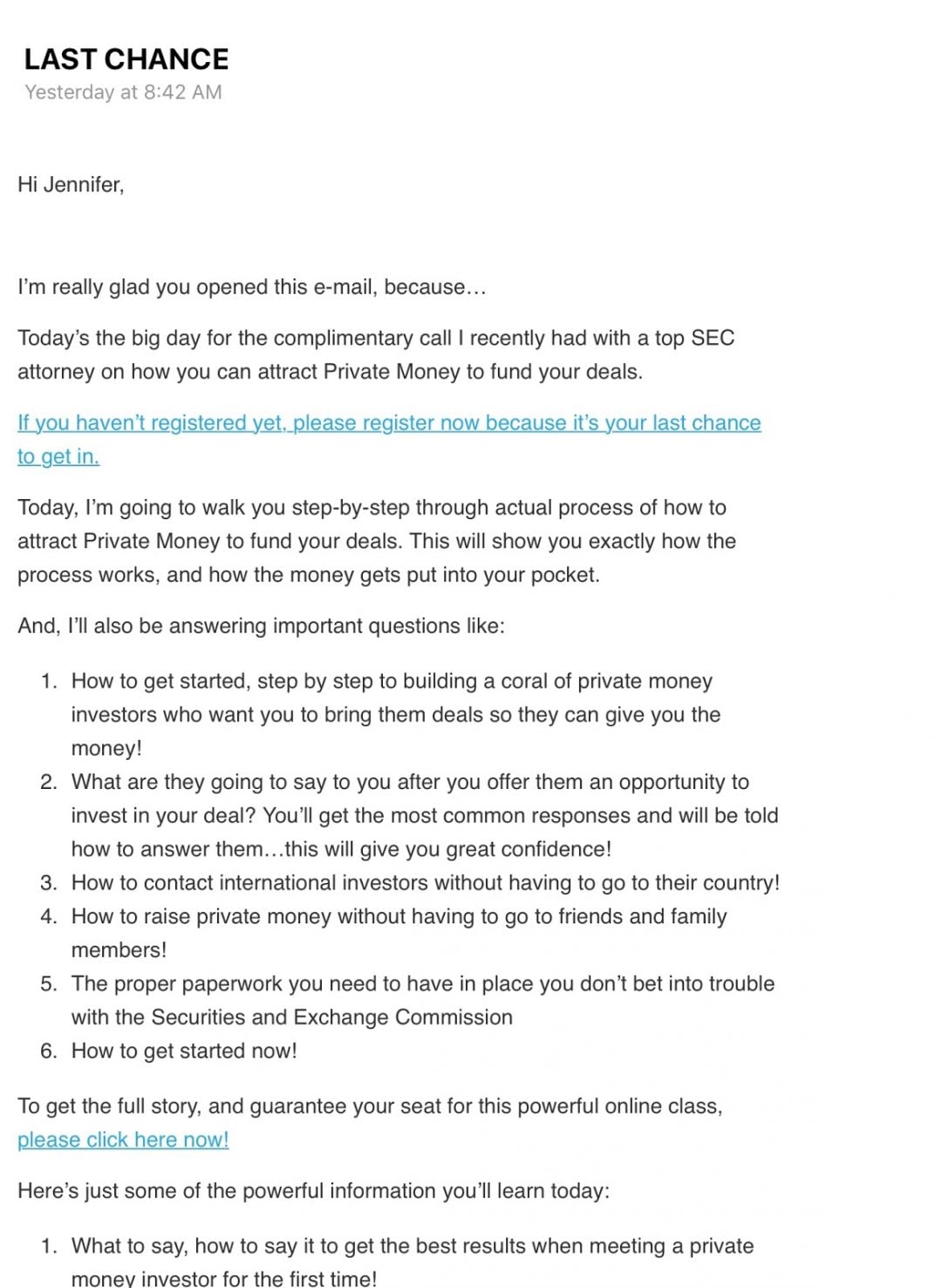
This is probably the true breakup email. It is very basic, text only, and almost completely void of color, clickable text, and even emotion.
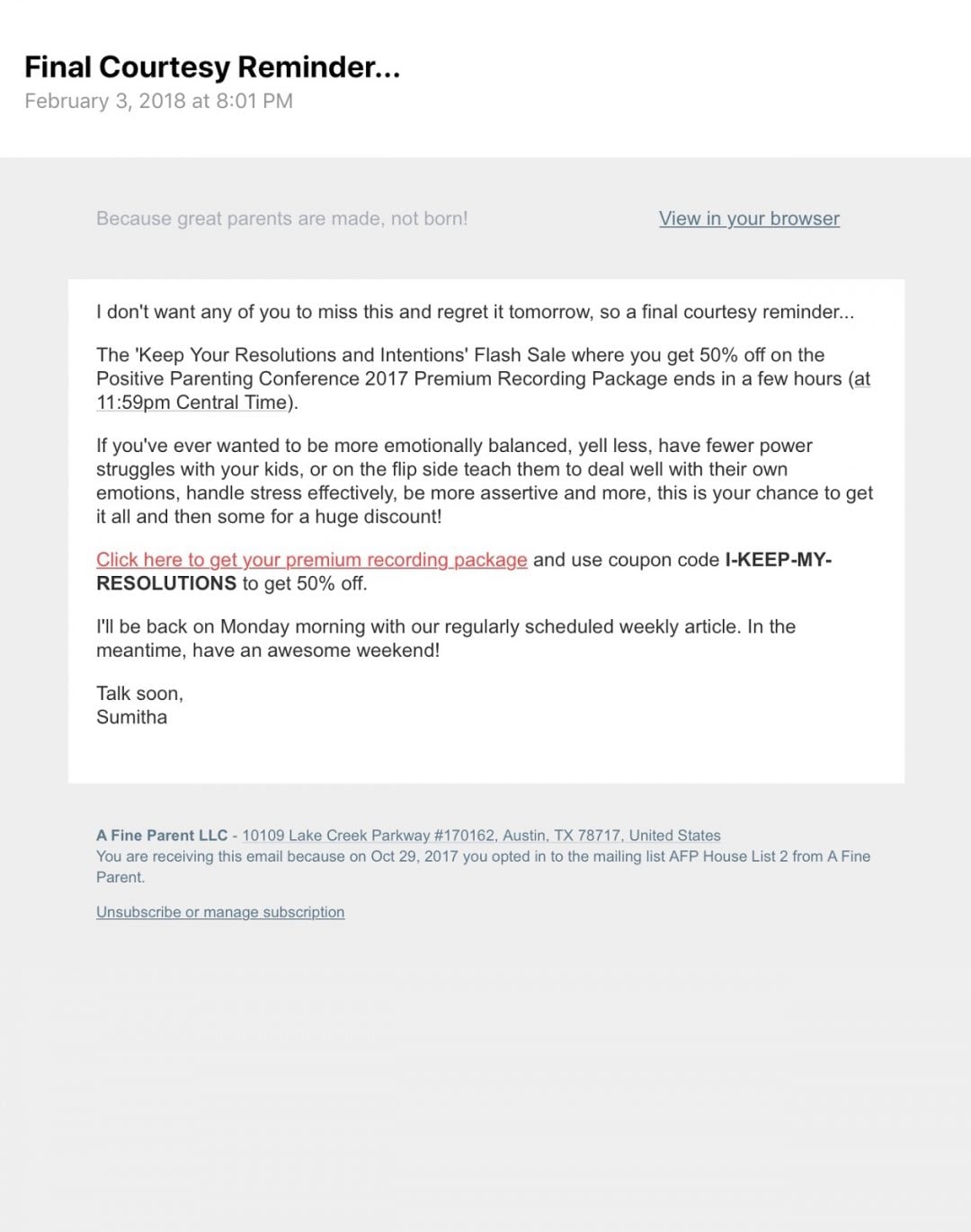
However you decide to engage your email list, don’t forget the importance of AB testing your emails to maximize their efficiency and effectiveness.
Need help with your inbound email strategy? Above the Fold Media can help you target your messaging, so you can better engage with your leads and customers using email. Learn more now.
